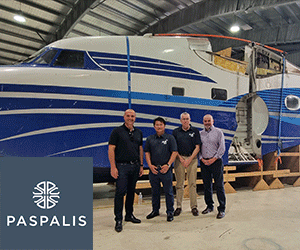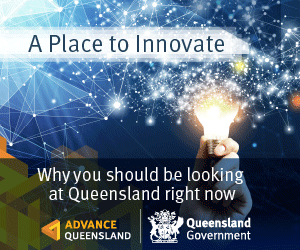1MG FlippingBooks
Q&A with Engineers Australia CEO Romilly Madew
The driving force behind Engineers Australia outlines the challenges and triumphs of the profession, and explores its vital role in shaping our future.

Engineering is one of the oldest disciplines in the world. How have engineers across different branches shaped the Australia we know today?
Engineers have been pivotal in shaping modern Australia, influencing its landmarks, economy, and societal progress.
Infrastructure and Transportation: The landscape of Australia is dotted with engineering icons. The Sydney Harbour Bridge, Opera House, and Melbourne’s West Gate Bridge are just a few structures showcasing engineering prowess. To bridge vast distances within the country, engineers developed intricate road networks, railways, and airports. The Indian Pacific Railway, connecting Perth to Sydney, is a prime example.
Natural Resources and Environment: Australia’s economic strength owes much to its rich mineral resources. Engineers innovated in mining techniques, leading to efficient extraction of minerals like coal and gold. In the face of Australia’s arid climate, they also introduced sophisticated irrigation systems and projects like the Snowy Mountains Scheme for water management. Their focus also extended to environmental conservation, spearheading sustainable energy projects.
Urban Development and Technology: Rapid population growth demanded robust urban planning. Engineers have been central in designing sustainable cities with efficient waste management, sanitation, and public transport systems. In the digital age, they have ensured Australia remains connected, laying undersea cables and driving projects like the National Broadband Network.
What are some things, perhaps under-appreciated, that have not changed in the past 100+ years that will endure?
Goldfields Water Supply Scheme is a pipeline and dam project that delivers potable water from Mundaring Weir in Perth to communities in Western Australia’s Eastern Goldfields, particularly Coolgardie and Kalgoorlie. The project was commissioned in 1896 and completed in 1903. The pipeline continues to operate today, supplying water to over 100,000 people in over 33,000 households as well as mines, farms, and other enterprises.
This was designed and developed by C.Y. Oconner who also designed Fremantle Harbour (thought to be impossible).
Melbourne’s sewerage system has also provided world-class sanitation for over 100 years, protecting public health and the environment.
Can you share some insights into the cutting-edge trends in the engineering landscape, particularly in terms of technological advancements and innovation. How might they advance Australia’s national interests?
The engineering landscape in Australia is undergoing significant transformation due to technological advancements. Digital twins, virtual replicas of systems, have the potential to revolutionise various sectors by optimising solutions, reducing costs, and enhancing global competitiveness. Emphasis on sustainable energy, particularly wind, solar, and tidal sources, positions Australia to become a leader in eco-friendly solutions, simultaneously creating green jobs and reducing carbon footprints.
The advent of additive manufacturing, or 3D printing, promises efficiency and waste reduction in production processes. Meanwhile, artificial intelligence (AI), especially in sectors like mining and healthcare, can boost productivity and streamline diagnostics. The Internet of Things (IoT) promises to transform urban spaces into smart cities, enhancing the quality of life with efficient traffic, energy, and waste management systems.
Innovations in advanced materials like graphene open doors for growth in high-tech industries, while breakthroughs in biomedical engineering can solidify Australia’s position as a medical research hub. Furthermore, the rise of autonomous systems in transportation and agriculture ensures enhanced productivity across vast landscapes. Embracing these innovations not only ensures economic growth and environmental stewardship but also cements Australia’s role as a global leader in technological advancement.
Innovation is a cornerstone of progress. What is your perspective on the current state of innovation within the engineering field? Do any specific examples come to mind?
Despite having one of the world’s most educated and wealthy populations, Australia remains a chronic underperformer when it comes to the commercialisation of engineering innovation. Australia’s science, technology, engineering, and maths (STEM) start-up ecosystem is consistently ranked as one of the worst in the developed world.
The commercialisation of engineering innovation is frequently viewed through the lens of profit-making or job creation. However, the COVID-19 pandemic has illustrated how important STEM ecosystems are for crisis response, from creating vaccines to helping people and businesses transition to new modes of operating during lockdowns.
For Australia to improve its capacity to commercialise STEM innovation, there are three core issues where a genuine policy shift is required, as outlined in our Commercialisation of Engineering Innovation Report:
- Improving models of collaboration and ecosystem development.
- Reforming grants processes and tendering for government contracts.
- Reducing regulation and incentivising investment in STEM start-ups in line with global best practice.
Does Australia have the right mix of engineers for the 2020s and beyond?
STEM underpins everything we do as a society. Australia’s success, progress, and prosperity are intrinsically linked to our ability to embrace STEM education and skills. It’s anticipated 75 per cent of all new jobs will require STEM skills in the future, and the former National Skills Commission predicts STEM occupations will increase by 12.9 per cent over the coming years.
However, the engineering workforce in Australia is confronted with a pressing issue—the dwindling interest in science and mathematics subjects among students.
Over the years, Australian students’ performance in mathematics has declined compared to OECD countries. A contributing factor is an alarming statistic that 38 percent of secondary education teachers have taught subjects outside their areas of expertise, including mathematics, science, and technology. This situation has contributed to a shortage of qualified students pursuing higher or vocational engineering education.
While science, technology, and mathematics provide the necessary theories and tools, it is engineering that allows for the practical application of this knowledge. Engineers are indispensable in employing scientific and mathematical acumen to develop tangible solutions for real-world issues such as climate change and supporting Australia’s submarine capability.
To ensure Australia’s productivity and societal prosperity, it is also crucial to bolster the pipeline of engineers. In Engineers Australia’s recent submission to the Government’s Pathway to Diversity STEM review we outline a key aspect of achieving this lies in embracing diversity within the engineering workforce. Currently, over 60 percent of Australia’s engineering workforce comprises overseas-born engineers, who bring valuable experience and knowledge to contribute to the nation. Unfortunately, unconscious and conscious biases often hinder their job prospects, preventing them from leveraging their expertise fully.
Then we have the glaring gender imbalance. While women make up 27 per cent of the overall STEM workforce, the engineering profession lags, with only 16 per cent of Australian engineering graduates and 13 per cent of the engineering workforce being female.
The government must prioritise initiatives that encourage students to embrace STEM subjects, provide better support for teachers, and promote diversity and equal opportunities within the engineering profession. By fostering a more inclusive environment and encouraging diverse perspectives and experiences, we can unlock the full potential of research and innovation in Australia.










